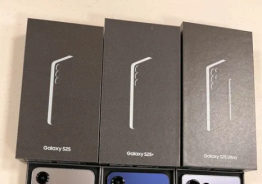The launch of Motorola Atrix HD at AT&T posed a strong challenge to heavyweight Android smartphones. In a $99 package, Motorola offers cutting- edge hardware and software like HD display, Snapdragon S4 processor, a 8-megapixel snapper, and Android 4.0 Ice Cream Sandwich.
However, HTC slashed prices of its flagship smartphone to $99 on the carrier as a counter-attack on Motorola's move. With the discounted price, AT&T One X lands in the same pit as the Atrix HD.
Here is a detailed comparison of the two sub-$100 Android smartphones, offered exclusively by A&T in the U.S.
Design and Display
The Atrix HD adopts the traditional Kevlar back-packing from Motorola's Droid Razr line-up of smartphones, which is perhaps a good thing. However, a large bezel around the display is a downfall for the device. HTC One X, on the other hand, has a truly inspiring design that has garnered a lot of positive reviews for the device.
Motorola Atrix HD sports a 4.5-inch ColorBoost display with resolution of 1280 X 720 pixels. HTC One X has the same number of pixels on the screen measuring 4.7 inches in size. With wide 180-degree viewing angles and highly accurate color reproduction and color temperature, the LCD2 display of HTC One X is far beyond the reach of Atrix's TFT display in quality.
Processor, Memory and Storage
Both smartphones come loaded with dual-core 1.5 GHz Snapdragon S4 processor, accompanied by 1GB RAM and Adreno 225 GPU. HTC One X has 16GB of storage. The Atrix HD has just 8GB of on-board storage, but it supports microSD up to 32GB.
Connectivity
HTC One X and Motorola Atrix HD both benefit from AT&T's 4G LTE network. Standard connectivity features like assisted GPS, micro USB, and Bluetooth are all there. A unique feature in the One X is NFC connectivity, while the Atrix HD has a dedicated HDMI port.
User Interface
Both smartphones run the Android 4.0 Ice Cream Sandwich out of the box. HTC One X has the much-highlighted Sense 4.0 UI and Beats Audio integration on the top. Some people think of Sense 4.0 and Beats Audio as innovative features, while others quote it as slightly over-designed and over-loaded software elements. To be clear, there isn't any deficiency in either of them.
The Atrix HD runs Android 4.0 at near-stock level with SmartActions software on the top. Traditional MotoBlur accounts are gone and there isn't much of MotoBlur in the Atrix HD. Motorola Atrix HD is business ready. Government-grade encryption protects confidential data like e-mail, contacts, and calendar schedules. Unfortunately, the Atrix HD lacks Webtop apps and Laptop functionality that has been an integral part of Motorola's Atrix family.
Camera
HTC One X packs 8-megapixel rear camera. Images are processed through HTC's ImageSense software. Integration of photo capturing and video recording modes, as well as nearly-zero shutter lags, make HTC One X's cam amongst the best in the market.
The Atrix HD also sports an 8-megapixal sensor but the camera seems to be struggling in many cases. Captured images lack contrast and are ridden with noise. It looks like Motorola hasn't focused much on image post processing.
The secondary camera, in both the smartphones, is 1.3-megapixel.
Battery Life
Motorola Atrix HD packs a 1780 mAh unremovable battery, while HTC One X has a 1800 mAh unremovable battery. A slight difference in storage capacity doesn't alter battery stats and both smartphones are identical in battery performance.
Conclusion
The HTC One X emerges as the winner of this smartphone shootout. It has an eye-popping design, better display, and a nicer camera.
Above all, HTC has confirmed the Android 4.1 Jelly Bean update for the device. However, the One X may fall little short on storage offerings. We are comparing 16GB with Atrix HD's 40GB (8GB + 32GB) storage here. For enterprise users, we still recommend the Atrix HD due to its business-class encryption and VPN support.
© Copyright 2025 Mobile & Apps, All rights reserved. Do not reproduce without permission.

















